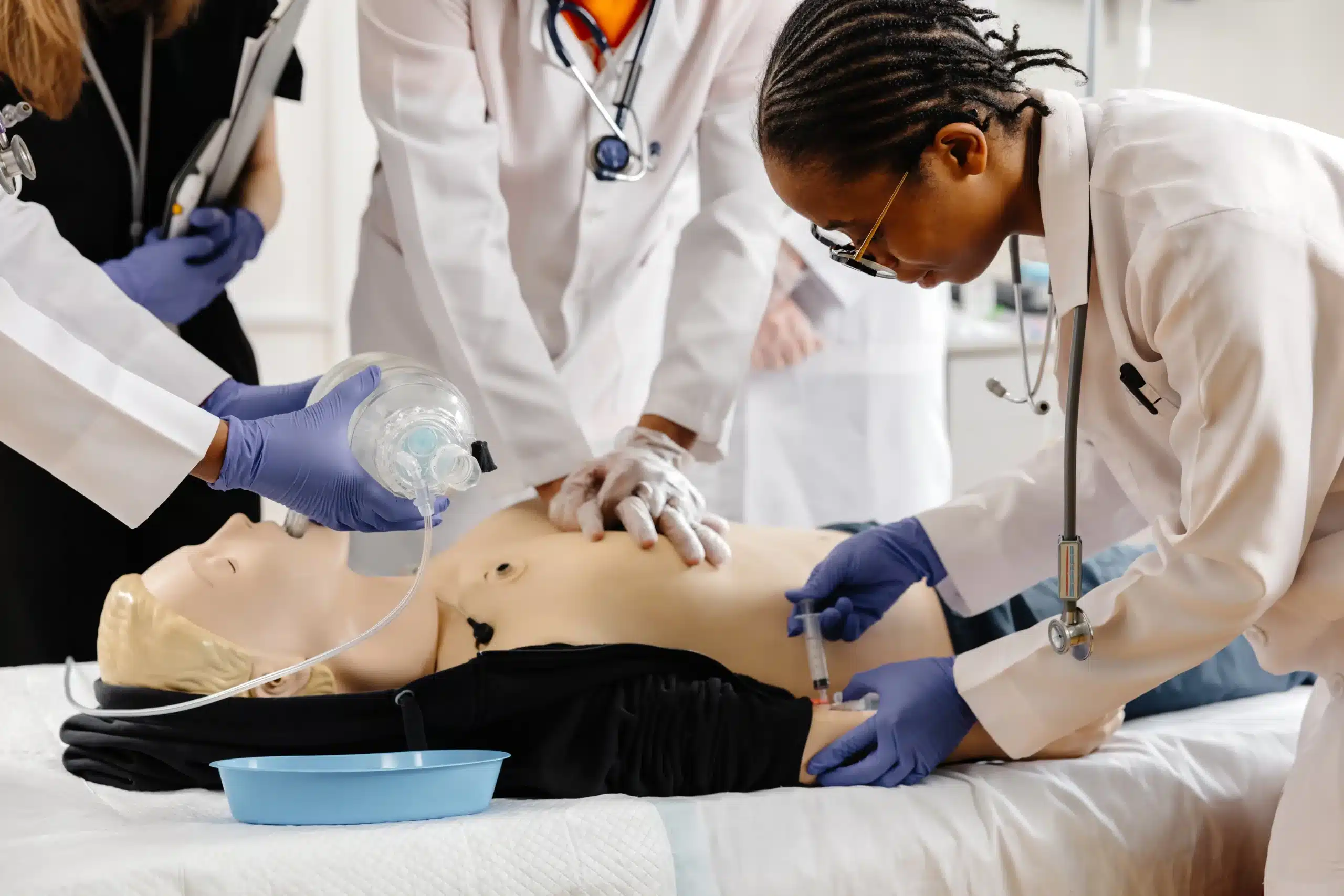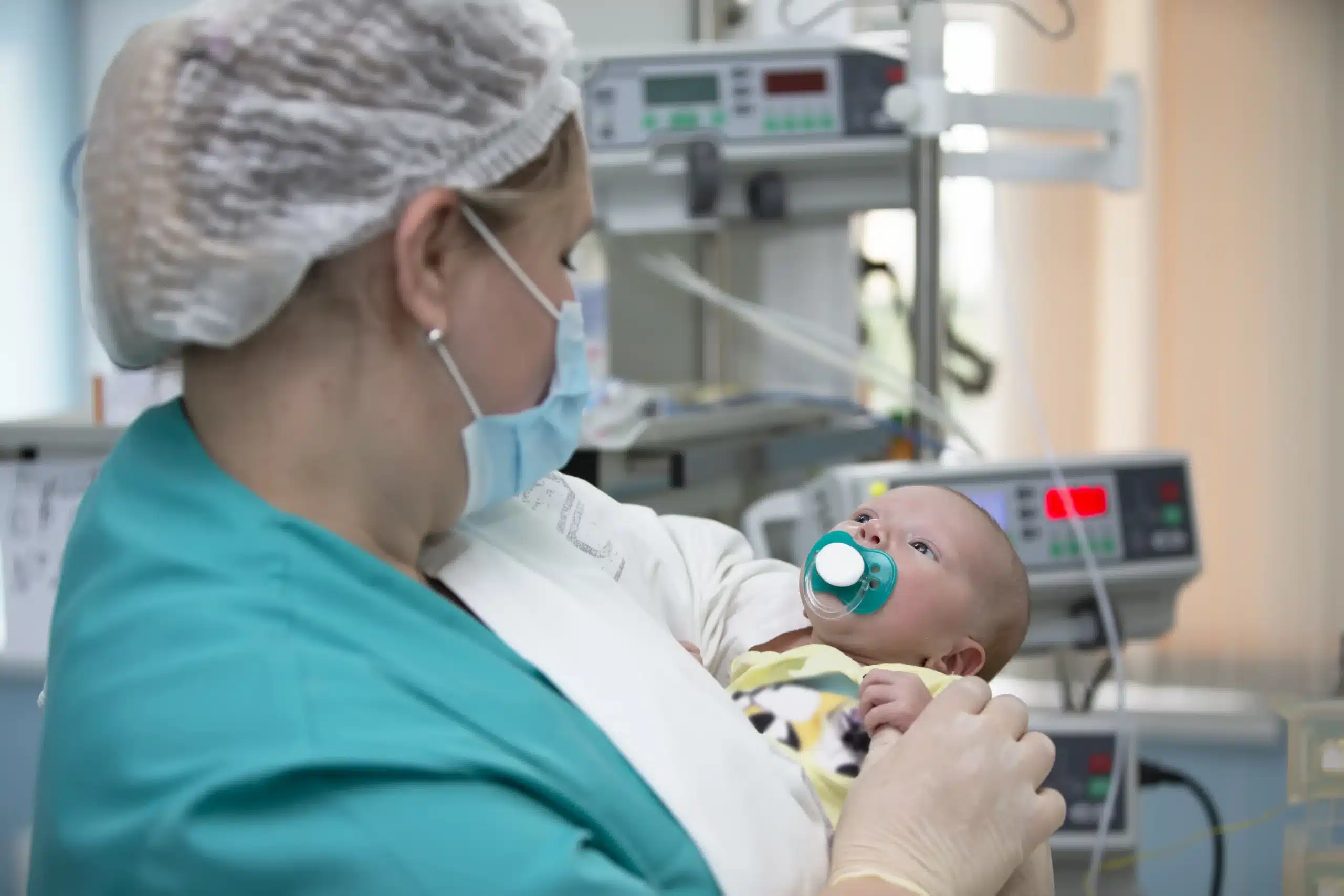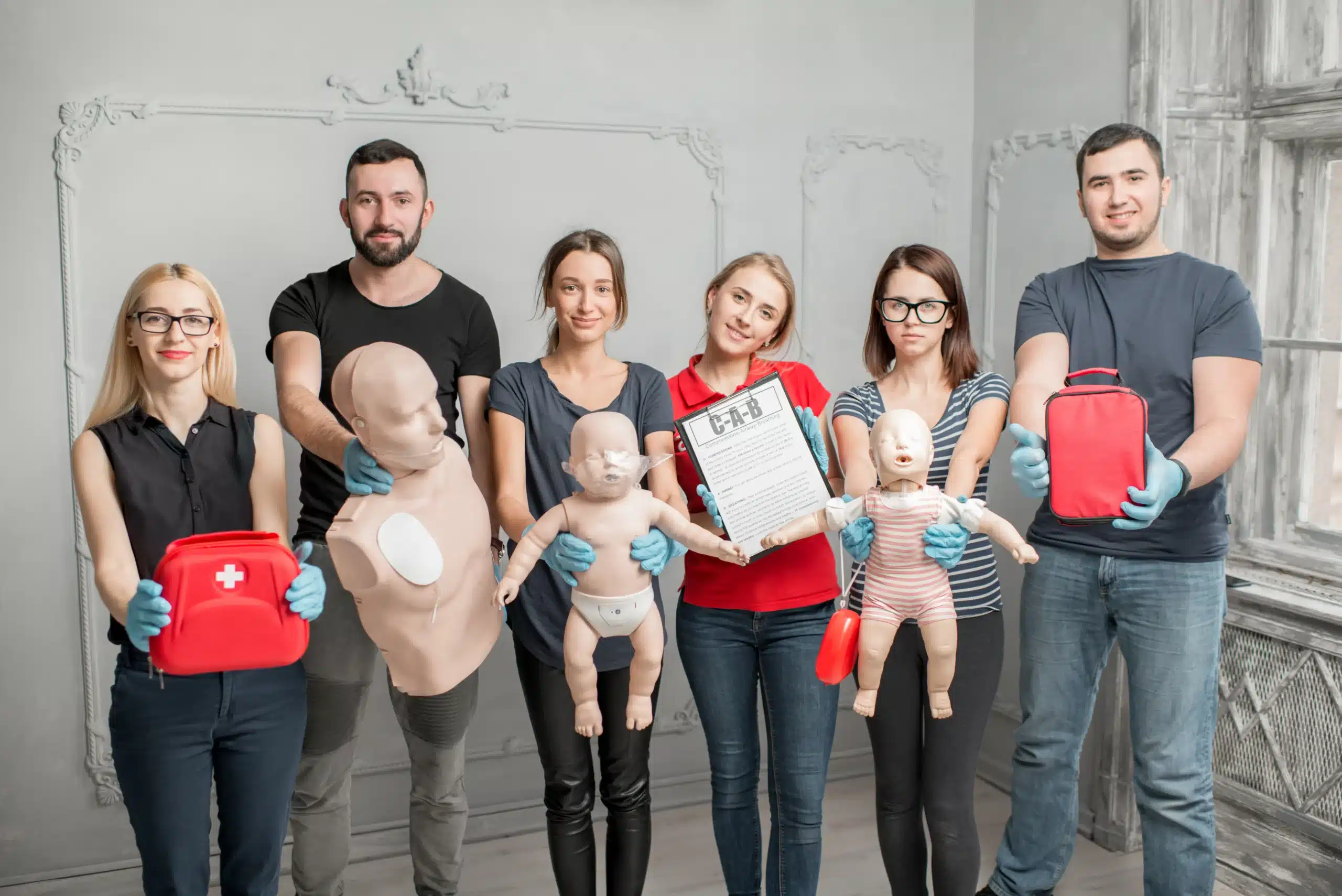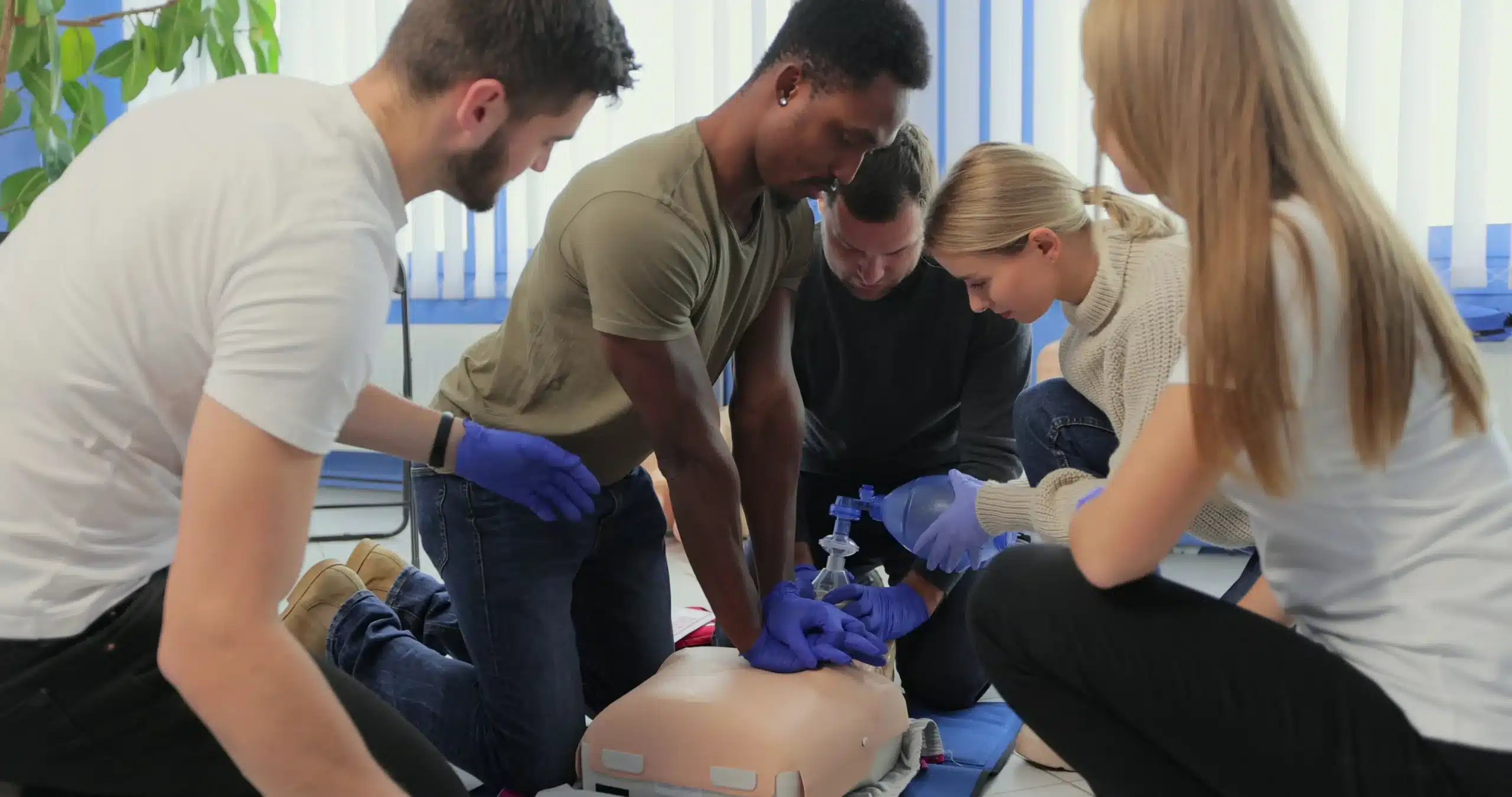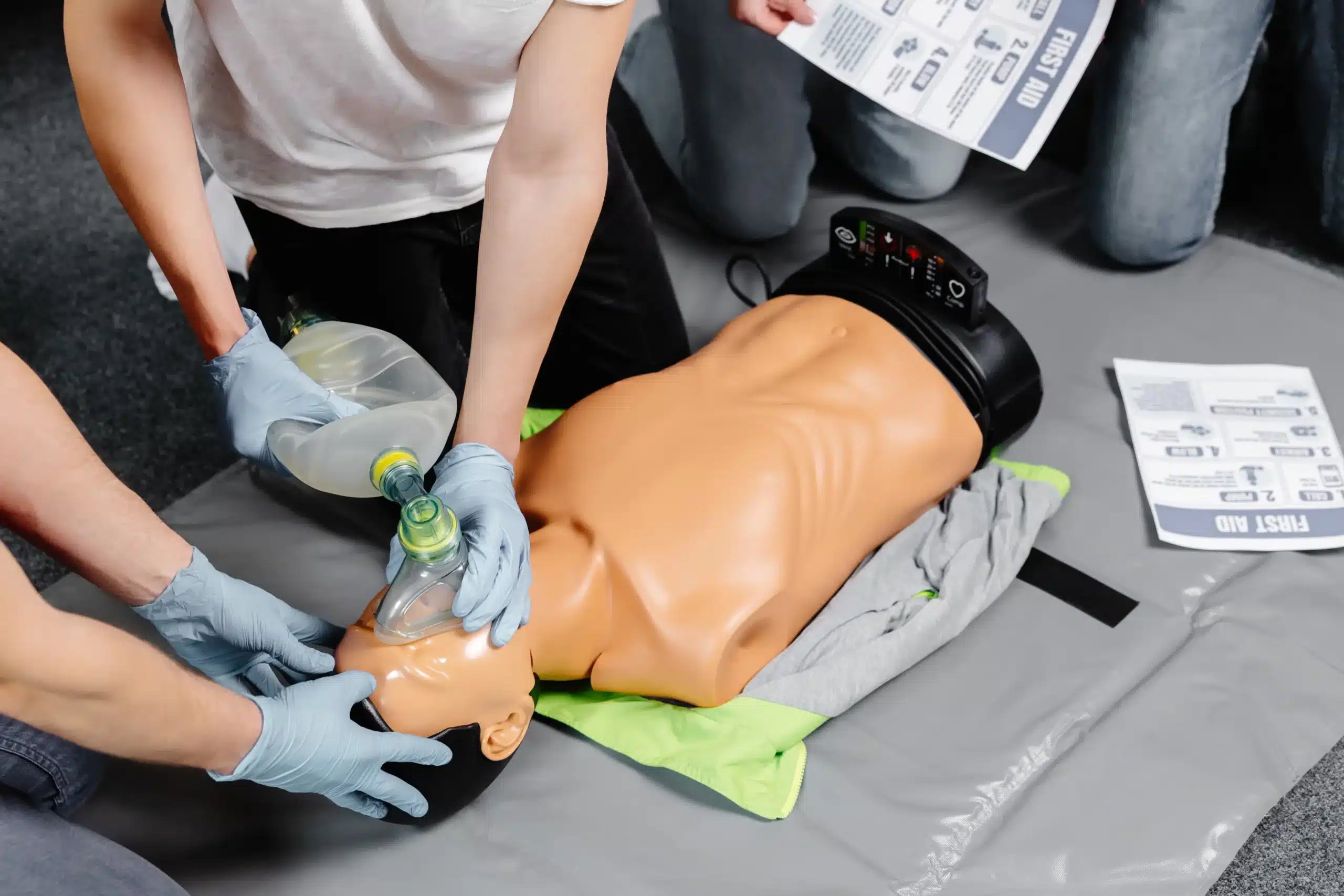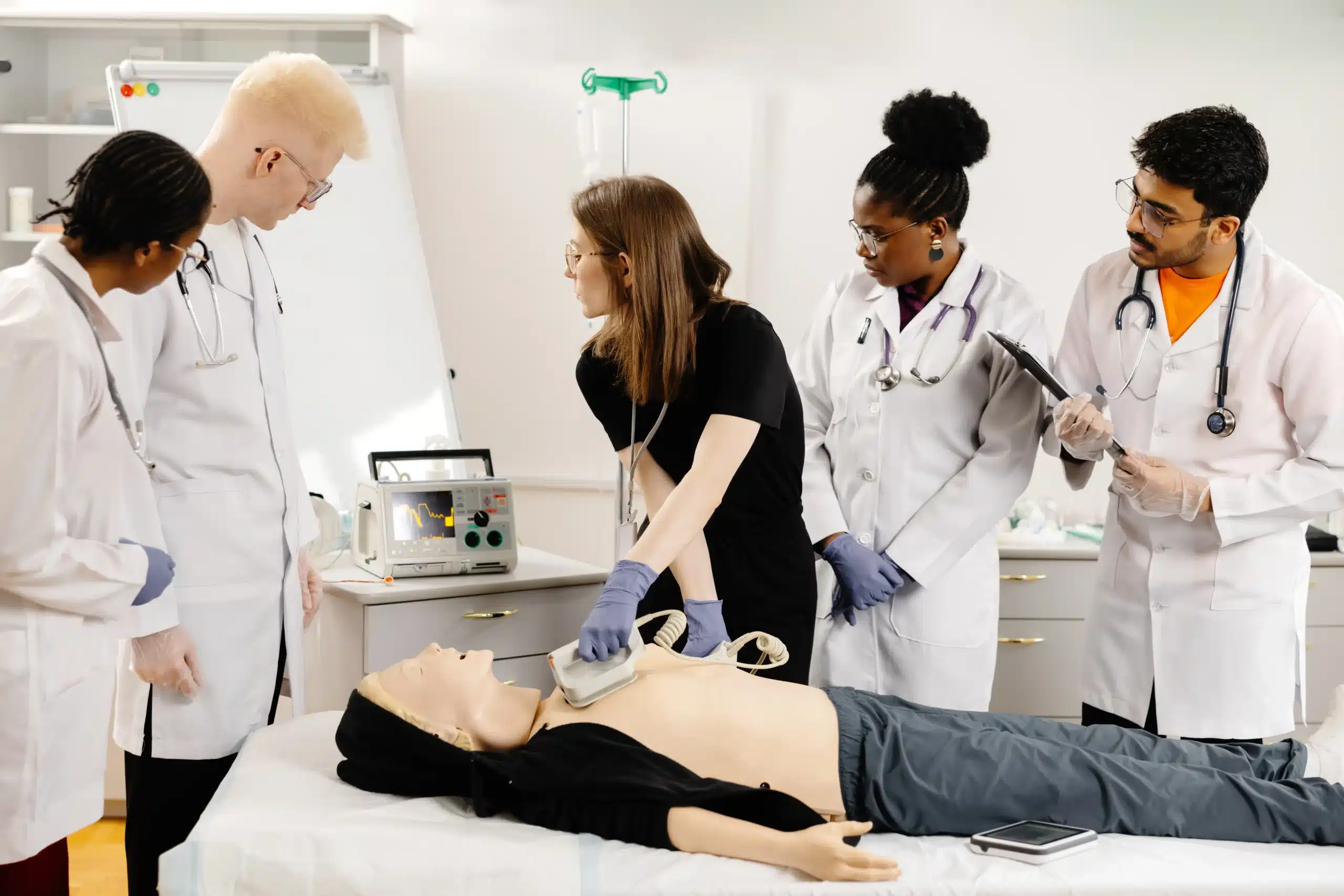In the face of a medical emergency, seconds can matter. Having the skills to provide immediate and effective care can significantly improve outcomes. Basic Life Support (BLS) training equips you with the knowledge and techniques to respond confidently in critical situations. This guide will walk you through the essentials of BLS certification, from understanding its core components to finding “BLS classes near me.” We’ll also cover the various types of BLS courses available, the associated costs, and how to maintain your certification. Empower yourself with the skills to save a life.
Key Takeaways
- BLS certification provides advanced life-saving skills essential for healthcare professionals and anyone interested in comprehensive training. Look for accredited providers like Tracy CPR Classes for high-quality instruction.
- Different learning formats cater to various needs and schedules. In-person, online, and blended learning options offer flexibility. Choose the format that best suits your learning style and time constraints.
- Maintaining your BLS certification demonstrates a commitment to providing effective care. Track your expiration date and complete recertification courses to stay up-to-date with the latest guidelines. Continuing education opportunities can further enhance your skills and knowledge.
What is BLS?
Basic Life Support (BLS) is a more advanced level of CPR training for healthcare providers, first responders, and other medical professionals. It goes beyond basic CPR to include more in-depth techniques for managing life-threatening emergencies. This specialized training equips individuals with the skills to respond effectively to various medical crises, ultimately improving patient outcomes.
What BLS is and why it matters
BLS certification expands on the foundational skills of CPR. It incorporates training for more complex situations, including advanced airway management, using bag-valve masks, and working effectively within a team during resuscitation. These advanced techniques are essential for providing high-quality care in settings like hospitals, clinics, and ambulances. The emphasis on early recognition and intervention in BLS training is crucial for improving patient outcomes during cardiac arrest, respiratory distress, and other critical situations. The ability to act quickly and confidently in these situations can significantly increase the chances of survival.
Who needs BLS certification?
BLS certification is often a requirement for many healthcare professions. Doctors, nurses, paramedics, EMTs, dentists, respiratory therapists, and other specialized medical roles typically need this credential. Many healthcare employers mandate BLS certification to maintain high standards of patient care and ensure their staff can handle medical emergencies effectively. While BLS training is geared towards healthcare providers, anyone interested in gaining more comprehensive life-saving skills is welcome to pursue this certification. It can be a valuable asset for those working in fields like education, childcare, or fitness, where medical emergencies could arise.
Find BLS Classes Near You
Finding the right BLS class can feel overwhelming, but it doesn’t have to be. Here’s how to find BLS classes near you:
Use online search tools and directories
Start your search online. Use search engines like Google, DuckDuckGo, or Maps to search for “BLS classes near me” or “BLS certification [your city].” CPR class directories, like the one from Tracy CPR Classes, can also help you locate certified instructors and training centers in your area. Online directories often let you filter by location, schedule, and course specifics, making it easier to find a class that fits your needs. Many providers, including Tracy CPR Classes, also list their schedules and course offerings on their websites.
Check local healthcare facilities and organizations
Hospitals, clinics, and other healthcare facilities frequently offer BLS classes for their staff and the community. Contact local hospitals like St. Joseph’s Medical Center or Sutter Health, or check with organizations like the American Red Cross to see if they have BLS training. You can also check with local providers like Safety Training Seminars for AHA-certified courses.
Explore community centers and educational institutions
Community centers, colleges, and universities often host BLS classes, sometimes at a lower cost than private training centers. Check with your local community college or recreation department for BLS certification courses. These locations sometimes combine CPR and First Aid training, which can be a convenient way to learn both.
Types of BLS Classes
Finding the right BLS class depends on your learning style, schedule, and preferences. Let’s break down the main types of BLS classes available.
In-Person BLS Classes
In-person BLS classes offer a hands-on learning experience guided by a certified instructor. This format allows for immediate feedback, personalized instruction, and the opportunity to practice skills in real time. For many, the interactive nature of in-person training builds confidence and ensures a thorough understanding of BLS techniques. If you thrive in a structured classroom environment and value direct interaction, in-person BLS training might be the best fit. Tracy CPR Classes offers in-person BLS training right here in Tracy, CA.
Online BLS Classes
Online BLS classes provide a flexible alternative to traditional in-person training. These courses allow you to learn at your own pace, fitting the training around your busy schedule. You can access the course materials from anywhere with an internet connection, making online learning a convenient option for those with demanding schedules or limited access to physical classes. Online BLS courses typically involve interactive modules, videos, and assessments. While online courses offer convenience, they may not provide the same level of hands-on practice as in-person classes. The American Heart Association offers online learning resources.
Blended Learning
Blended learning combines online learning with in-person skills sessions. You’ll typically complete the coursework online at your own pace, then attend a shorter in-person session to practice and receive feedback from an instructor. This approach allows for a more comprehensive learning experience, ensuring you have both the theoretical knowledge and the practical skills to perform BLS effectively. Blended learning is a great option for those who want the convenience of online learning but also value hands-on training. Excel CPR offers more information on blended learning CPR courses.
Choose the Right BLS Provider
Finding the right BLS provider is crucial for a valuable learning experience. Here’s what to consider when making your decision:
Look for accreditation and certification
First, ensure the provider offers AHA-approved BLS certification. Many employers require this specific accreditation, so double-check the course description for clear confirmation. A reputable provider will be happy to answer any questions about their accreditation.
Evaluate instructor qualifications
The instructor’s expertise directly impacts your learning. Look for instructors with real-world experience in healthcare or emergency response. Their practical insights can make all the difference in your training. Check the provider’s website for information on instructor backgrounds.
Consider class size and equipment
Hands-on practice is essential for BLS. Smaller class sizes allow for more personalized instruction and individual feedback. Ensure the provider has enough equipment, including manikins and AED trainers. In-person training is key for developing the muscle memory needed for effective CPR. Combined CPR and First Aid courses are a convenient way to learn both skill sets.
BLS Class Costs and Duration
Understand pricing for different class formats
BLS class costs depend on a few things: the type of course, the format, and your location. Expect some price differences between CPR/AED, BLS, ACLS, and PALS courses. The format—in-person, online, or blended—also affects the price. Finally, location matters. BLS classes in bigger cities might cost more than those in smaller towns. Tracy CPR Classes offers competitive rates, so visit their site for specifics. It’s always smart to compare prices from a few different providers to find what works for you.
Know the time commitment for BLS courses
Understanding the time commitment is key for planning. The BLS Blended Learning course usually involves about one to two hours of self-paced online learning. After that, there’s a shorter, in-person skills session (typically two hours) for hands-on practice and evaluation. Traditional in-person BLS courses often take a full day. Think about your schedule and how you learn best when choosing a format.
Look for discounts and package deals
You can often save money on BLS certification through discounts and package deals. Many providers offer lower rates for groups, which is great for workplaces or friends. You might also find discounts for combining certifications, like CPR/First Aid/BLS. Check with local providers like Tracy CPR Classes to see what they offer. These discounts can really help lower the overall cost.
Get BLS Certified
Getting your BLS certification is straightforward. This section breaks down the process into easy-to-follow steps.
Enroll and meet prerequisites
First, find a certified BLS provider. In Tracy, CA, providers like Safety Training Seminars offer in-person CPR, BLS, ACLS, PALS, and First Aid certification courses. Before enrolling, check for any prerequisites. Some providers may require proof of prior CPR training or other healthcare certifications. Once you’ve chosen a class and met the requirements, register and pay the course fee. You should receive a confirmation email with details about the training.
Know what to expect during training
BLS training typically combines online learning with in-person skills practice. The online portion covers essential concepts like high-quality CPR, the AHA Chain of Survival, and effective team dynamics. This part is self-directed and usually takes one to two hours. The in-person session focuses on hands-on skills practice and assessment. You’ll work with instructors and practice techniques on mannequins, and participate in simulated scenarios. For example, the BLS Blended Provider course from the Heart and Stroke Foundation of Canada follows this blended learning format.
Complete skills assessments and get certified
The final step involves completing skills assessments to demonstrate competency in the techniques you’ve learned. You’ll be evaluated on your ability to perform CPR, use an AED, and provide other life-saving interventions. After successfully completing the assessments, you’ll receive your BLS certification, often a digital certificate providing access to your credentials and training history. The American Red Cross, for instance, issues a digital certificate. These certifications are typically valid for two years.
Maintain Your BLS Certification
Keeping your BLS skills sharp is crucial for any healthcare provider. It’s not a one-and-done deal; staying current with the latest guidelines ensures you’re always ready to respond effectively in an emergency. This section covers how to maintain your BLS certification and continue your professional development.
Understand Certification Validity
BLS certifications, like those offered by the American Heart Association, are typically valid for two years. It’s essential to keep track of your expiration date. Mark it on your calendar or set a reminder so you’re not caught off guard. Knowing when your certification expires helps you plan ahead and avoid any gaps in your qualifications. For more information on BLS and CPR certifications, check out the Red Cross website.
Meet Recertification Requirements
Before your certification expires, you’ll need to complete a recertification course. This refresher course covers the latest BLS guidelines and techniques, ensuring your skills and knowledge are up-to-date. Many organizations, including Tracy CPR Classes, offer recertification courses designed for busy schedules. Recertification is typically shorter and more focused than the initial certification course, making it a convenient way to maintain your credentials. You can also find recertification courses through the American Red Cross.
Explore Continuing Education
Beyond recertification, consider exploring continuing education opportunities. Staying informed about advancements in emergency cardiovascular care can significantly enhance your skills and confidence. Organizations like the American Red Cross offer a range of continuing education courses that delve deeper into specific aspects of BLS and other life-saving techniques. These courses can provide valuable insights and help you stay at the forefront of best practices in healthcare. Continuing education demonstrates your commitment to professional growth and your dedication to providing the highest quality patient care.
BLS Providers in Tracy, CA and Surrounding Areas
Finding the right BLS training provider is crucial for receiving high-quality instruction and a valid certification. Several reputable organizations offer BLS courses in and around Tracy, CA. Here are a few options:
Tracy CPR Classes
Tracy CPR Classes offers a range of American Heart Association (AHA) courses, including BLS certification. They offer flexible scheduling, including weekend and evening options, and mobile training that brings the class to you. This makes it easier for both individuals and groups to access training.
American Red Cross
The American Red Cross provides CPR and first aid training, including BLS certification. They offer in-person classes, online modules, and blended learning that combines online coursework with in-person skills sessions. This variety lets you choose the learning style that works for you. Find a class near you on the Red Cross website.
St. Joseph’s Medical Center
Safety Training Seminars, affiliated with St. Joseph’s Medical Center, offers AHA-certified courses in BLS, ACLS, and PALS. Their training is designed for healthcare professionals maintaining their credentials and anyone interested in learning these lifesaving skills. Contact St. Joseph’s Medical Center for more information.
Sutter Health
Sutter Health offers various training programs, often combining CPR and First Aid certification. They emphasize BLS training for both healthcare providers and the community. Explore their course catalog on the Sutter Health website.
Other Local AHA-Approved Training Centers
Many other local training centers offer AHA-certified BLS courses, often with smaller class sizes and personalized instruction. Tracy CPR Classes provides a helpful Northern CA CPR Directory that lists training centers in the region, making it easier to find a convenient class.
Choose the Best BLS Class
Finding the right BLS class means considering a few things to make sure it fits your learning style, schedule, and needs. Here’s what to keep in mind:
Assess your learning style and schedule
Think about how you learn best. Do you prefer a traditional classroom or the flexibility of online learning? Blended learning, which combines online coursework with in-person skills practice, offers a nice balance and reduces potential COVID-19 exposure. Also, consider your schedule and how much time you can dedicate to a BLS course. Online and blended learning options often provide more flexibility, letting you learn at your own pace and on your own time.
Compare courses and reviews
Not all BLS classes are the same. Take time to compare different courses and read reviews from past students. Pay attention to feedback on the quality of instruction, the hands-on training, and the overall learning experience. Online reviews can offer helpful insights into the strengths and weaknesses of different programs and instructors.
Consider location and accessibility
Convenience is key, especially when fitting a BLS class into a busy schedule. Look for courses in a convenient location or explore mobile training options. Think about things like commute time, parking, and the accessibility of the training facility. Convenient scheduling, a central location, and flexible options make it easier to get the training you need.
Resources for BLS Students
As a BLS student, access to helpful resources can significantly enhance your learning experience. Here are a few key resources to keep in mind:
Access your digital certificate
After successfully completing your BLS course, you’ll receive a digital certificate, often valid for two years. This digital format provides convenient access to your certification and training records whenever you need them. Providers like the American Red Cross offer digital certificates upon course completion.
Renew online
Maintaining your BLS certification is crucial. If your credentials are still valid (at least 30 days from expiring), consider taking a BLS renewal course online. This convenient option allows you to refresh your skills and knowledge without disrupting your schedule.
Find supplementary training
Learning is an ongoing process, even after you’ve earned your initial certification. Seek out opportunities to expand your knowledge and refine your skills with supplemental training materials. Many providers, such as First Aid Safety Training, offer additional resources and guidance to help BLS practitioners stay up-to-date.
Get instructor support and peer interaction
Connecting with your instructors and classmates can enrich your learning experience. Training programs that facilitate communication and feedback foster a supportive learning environment. Instructor interaction offers personalized guidance and opportunities to address any questions you may have.
Related Articles
- BLS Certification in Tracy: Your Comprehensive Guide – Tracy CPR Classes
- Get BLS Certified in Stockton: Top Training – Tracy CPR Classes
- BLS HeartCode in Tracy: Blended Learning CPR – Tracy CPR Classes
- BLS Classes in Lodi: Your Complete Guide – Tracy CPR Classes
- BLS for Healthcare Providers in Tracy: Your Guide – Tracy CPR Classes
Frequently Asked Questions
What’s the difference between CPR and BLS?
CPR is a basic life-saving technique that anyone can learn. BLS builds upon those CPR skills, adding more advanced techniques for healthcare providers and professionals in medical settings. Think of BLS as a specialized upgrade to CPR.
How do I find a BLS class that fits my schedule?
Many providers offer various class formats, including in-person, online, and blended learning (a mix of online and in-person). Online directories and provider websites often let you filter by location, schedule, and course specifics to find the best fit. Don’t hesitate to contact providers directly to discuss your scheduling needs.
How much does BLS certification cost, and how long does it last?
Costs vary depending on the course format, location, and provider. Generally, certifications are valid for two years. Check with different providers for specific pricing and any available discounts or package deals.
What if my BLS certification is about to expire?
You’ll need to take a recertification course before it expires to keep your skills current and maintain your credentials. Many providers offer recertification courses that are often shorter than the initial certification.
Where can I find additional resources to enhance my BLS knowledge?
Many providers offer supplementary materials and continuing education opportunities. Look for resources from reputable organizations like the American Heart Association or the American Red Cross to stay up-to-date on the latest guidelines and best practices.
